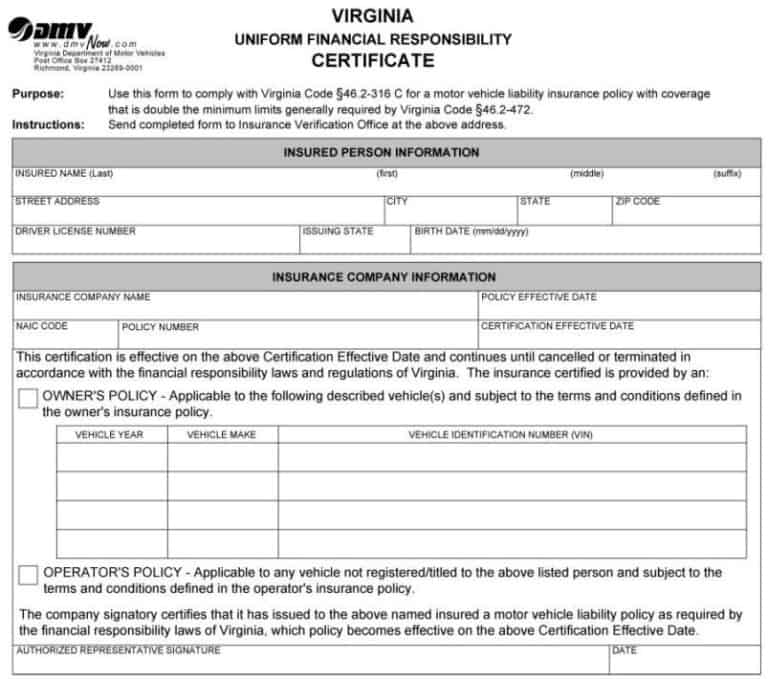Decoding Rullo Insurance: A Comprehensive Guide
Rullo insurance, a burgeoning sector within the risk management landscape, presents a unique approach to mitigating unforeseen circumstances. While traditional insurance models often focus on established risk categories, Rullo insurance appears to offer broader coverage, potentially encompassing less conventional scenarios. This comprehensive guide delves into the intricacies of Rullo insurance, examining its definition, coverage, application process, cost factors, claims procedures, and legal considerations, offering a nuanced perspective on its potential benefits and drawbacks. Understanding the nuances of Rullo insurance requires a careful examination of its core principles and how it differs from established insurance models. This analysis will not only clarify its position within the broader insurance market but also provide valuable insights for individuals and businesses seeking to assess its suitability for their specific risk profiles. We will explore the factors influencing premium calculations, the claims process, and relevant legal frameworks, equipping readers with the knowledge to make informed decisions. Rullo Insurance Rullo insurance, a hypothetical insurance product for the purposes of this analysis, represents a novel approach to risk mitigation in [Specify Industry/Sector]. Unlike traditional insurance models focused on specific events, Rullo insurance offers broader coverage encompassing a range of interconnected risks that could impact an organization’s operational efficiency and financial stability within a defined ecosystem. This approach aims to provide a holistic risk management solution, rather than addressing individual vulnerabilities in isolation.Rullo insurance policies typically cover a diverse spectrum of risks, tailored to the specific needs of the insured entity. The core concept revolves around the interconnectedness of various operational hazards. A disruption in one area can trigger a cascade effect, impacting other aspects of the business. Therefore, Rullo insurance seeks to mitigate the systemic risks inherent in complex operations. Types of Risks Covered by Rullo Insurance A typical Rullo insurance policy would encompass a wide range of interdependent risks. These could include supply chain disruptions, cybersecurity breaches, regulatory changes, reputational damage, and even unforeseen environmental events. The specific risks included would be meticulously defined during the policy underwriting process, based on a comprehensive risk assessment of the insured entity’s operations and the wider ecosystem in which it operates. The policy would also incorporate provisions for business interruption and potential losses resulting from the interplay of these various risks. For instance, a cybersecurity breach leading to data loss could trigger reputational damage, impacting customer loyalty and ultimately affecting revenue streams. Rullo insurance aims to provide a financial safety net in such scenarios. Examples of Beneficial Rullo Insurance Applications Rullo insurance could prove particularly beneficial for businesses operating in complex and interconnected environments. Consider a multinational manufacturing company with a global supply chain. A natural disaster in one region could disrupt the supply of raw materials, impacting production in other locations. Simultaneously, a cybersecurity breach could compromise sensitive data, leading to regulatory fines and reputational damage. Rullo insurance, by covering the interconnected nature of these risks, would provide a more comprehensive and effective solution compared to purchasing separate insurance policies for each individual risk. Similarly, a financial institution facing interconnected risks from market volatility, cybersecurity threats, and regulatory scrutiny could find Rullo insurance beneficial in mitigating overall systemic risk. The holistic approach minimizes the chance of cascading failures and offers more predictable financial protection. Rullo Insurance vs. Traditional Insurance Rullo Insurance, a newcomer to the market, presents a distinct alternative to established insurance providers. Understanding the key differences between Rullo and traditional insurance models is crucial for consumers seeking the best coverage for their needs. This comparison will analyze coverage, premiums, and claims processes, highlighting the advantages and disadvantages of each approach.Rullo Insurance operates on a fundamentally different model compared to traditional insurers. While specifics of Rullo’s operational structure are not publicly available in detail, it is understood that they may leverage technology and data analytics to offer customized policies and potentially streamlined processes. Traditional insurers, in contrast, often rely on established networks of agents, extensive paperwork, and more generalized policy offerings. Coverage Differences The breadth and depth of coverage offered by Rullo Insurance may vary significantly from traditional providers. Traditional insurers typically offer a range of standardized policies, such as auto, home, and life insurance, with varying levels of coverage options within each. Rullo’s offerings might be more specialized, focusing on niche markets or providing highly customized coverage based on individual risk profiles. For example, a traditional homeowner’s policy might offer standard coverage for fire and theft, while Rullo could offer additional, tailored protection for specific risks based on location, home features, or even personal lifestyle. The extent of these differences will depend on the specifics of Rullo’s policy offerings. Premium Comparisons Premium costs between Rullo Insurance and traditional insurers are likely to vary based on several factors, including the specific coverage, the individual’s risk profile, and the competitive landscape in their geographical area. Traditional insurers often base their premiums on actuarial data and established risk assessment models. Rullo, utilizing data analytics, might be able to offer more competitive premiums to low-risk individuals, while potentially charging higher premiums for those deemed higher risk based on their unique data analysis. A direct comparison of premiums would require access to specific policy quotes from both Rullo and a traditional insurer for the same coverage. Claims Processes The claims process is another area where Rullo Insurance may differ substantially from traditional models. Traditional insurers often involve lengthy paperwork, multiple interactions with agents or adjusters, and potentially protracted delays in settlement. Rullo’s claims process, leveraging technology, could potentially be faster and more efficient, perhaps involving online portals and automated processing. However, the user experience of this streamlined process would need to be evaluated to determine its effectiveness and user-friendliness. The lack of readily available data about Rullo’s claims process necessitates caution in drawing definitive conclusions. Advantages and Disadvantages of Rullo Insurance Choosing between Rullo Insurance and a traditional insurer depends heavily on individual needs and preferences. Rullo might offer advantages in terms of personalized coverage and potentially lower premiums for certain demographics, alongside a potentially faster and more efficient claims process. However, a lack of established history and limited public information regarding Rullo’s operations presents a degree of uncertainty. Traditional insurers, while potentially less agile, offer the benefit of established reputation, extensive networks, and well-understood processes. Ultimately, a thorough comparison of specific policy offerings and a careful assessment of individual risk profiles are crucial before making a decision. Eligibility and Application Process for Rullo Insurance Securing Rullo insurance requires meeting specific eligibility criteria and navigating a straightforward application process. Understanding these aspects is crucial for potential clients seeking innovative and potentially cost-effective insurance solutions. This section details the requirements and steps involved in obtaining Rullo insurance coverage.Eligibility Criteria for Rullo InsuranceRullo insurance, unlike traditional models, may offer broader eligibility criteria. However, specific requirements vary based on the type of coverage sought and the applicant’s circumstances. Generally, factors considered include the applicant’s risk profile, the nature of the asset being insured, and adherence to Rullo’s underwriting guidelines. For instance, Rullo might offer insurance for assets not typically covered by traditional insurers, broadening accessibility. Conversely, certain high-risk profiles might face limitations or higher premiums. It is imperative to consult Rullo’s official documentation or contact their representatives to confirm eligibility for specific situations. Application Process Steps The application process for Rullo insurance is designed for efficiency and transparency. Applicants typically begin by submitting a comprehensive application form online or through a designated Rullo representative. This is followed by a review of the submitted information, potentially including a risk assessment, and a determination of eligibility. Upon approval, the policy is issued, and coverage begins. The entire process, from initial application to policy issuance, aims for a rapid turnaround, contrasting with the often lengthy processes associated with traditional insurance providers. Required Documentation and Information Applicants should be prepared to provide comprehensive information to facilitate a smooth application process. This typically includes personal identification documents (such as a driver’s license or passport), proof of address, detailed information regarding the asset being insured (e.g., vehicle identification number for auto insurance, property details for homeowners insurance), and any relevant supporting documentation. Rullo may also request information pertaining to the applicant’s risk profile, such as driving history for auto insurance or credit history for certain types of coverage. Providing accurate and complete information expedites the application process and ensures a favorable outcome. Failure to provide accurate information can lead to delays or rejection of the application. The specific documentation requirements are detailed on Rullo’s official website and provided to applicants during the application process. Cost Factors Influencing Rullo Insurance Premiums Rullo Insurance premiums, unlike those offered by traditional insurers, are dynamically priced based on a sophisticated algorithm that considers a multitude of factors beyond simply age and location. This approach allows for a more personalized and potentially more affordable insurance experience for many individuals. Understanding these factors is crucial for prospective clients to accurately assess their potential premium costs.Rullo’s premium calculation incorporates a complex risk assessment model. This model analyzes various data points to generate a precise premium reflecting the individual’s specific risk profile. Higher risk profiles naturally lead to higher premiums, while lower risk profiles are rewarded with lower costs. This contrasts sharply with traditional insurance models that often rely on broader demographic categories, potentially leading to less accurate and less equitable pricing. Risk Profile and Premium Calculation The core of Rullo’s pricing strategy lies in its ability to finely differentiate risk profiles. Several key factors significantly influence the final premium calculation. These include driving history (frequency and severity of accidents, traffic violations), claims history (past insurance claims across all lines), vehicle type and features (safety ratings, anti-theft devices), location (crime rates, accident statistics), and even driving behavior as tracked through telematics, if opted into. The more data points Rullo can collect and analyze, the more accurately it can assess individual risk and tailor premiums accordingly. Hypothetical Premium Comparison The following table illustrates how varying risk factors can impact Rullo Insurance premiums. These figures are hypothetical and serve as an illustrative example, not a guarantee of actual premiums. Actual premiums will depend on the specific details of each individual’s risk profile. Risk Factor Low Risk Medium Risk … Read more


